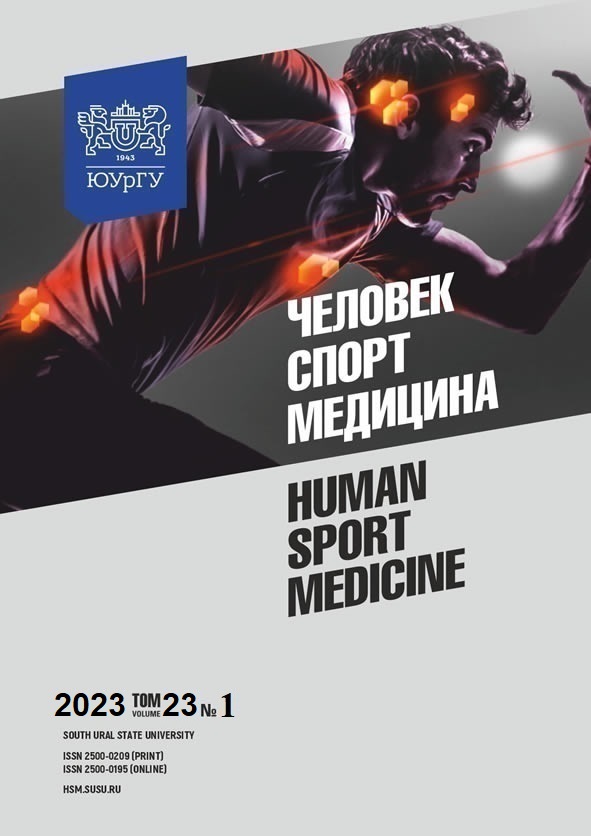FUNCTIONAL PROFILES OF NIGHT HOCKEY LEAGUE WINNERS (40+)
Abstract
Aim. The paper aims to identify the most significant functional parameters of amateur hockey players with respect to their age. Materials and methods. Ten amateur hockey players, ages 41–46 (mean age 42,88 ± 1,7 years, body length 177,5 ± 4,5 cm, body weight 85 ± 9,2 kg) with a sports experience of more than 10 years, underwent body composition analysis, a cycle ergometer test with ECG recording, hemodynamic monitoring, the Wingate test (legs and arms), and a coordination test. Results. Hemodynamic monitoring and ECG stress testing revealed that major cardiovascular parameters were within age norms. Meanwhile, 40% of amateur players had arterial hypertension, and 20% had rhythm disturbances during
the stress test. Speed power qualities were lower than those of professional hockey players but better than those of non-athletes. Furthermore, it was found that the sensorimotor coordination of amateur hockey players was similar to that of professional athletes. Conclusion. Sensorimotor coordination can be considered a major parameter for successful athletic performance in amateur hockey.
References
References on translit
Copyright (c) 2023 Human. Sport. Medicine

This work is licensed under a Creative Commons Attribution-NonCommercial-NoDerivatives 4.0 International License.















